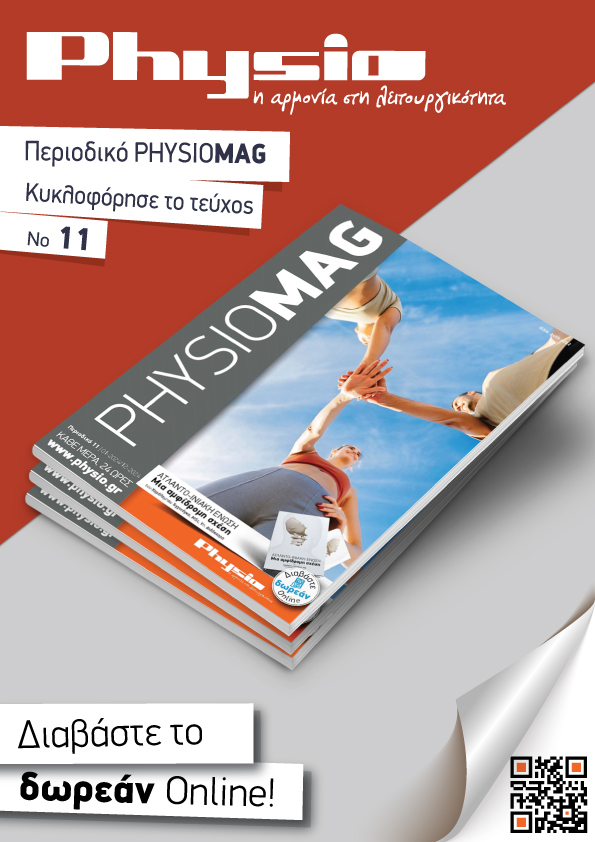KNEE PAIN
October 20, 2006 — In older patients with knee pain, 2 interventions by pharmacists and physiotherapists improved health outcomes and reduced nonsteroidal anti-inflammatory drug (NSAID) use for the short term, according to the results of a multicenter randomized trial reported in the October 20 Online First issue of the BMJ.
Pharmacy and Physiotherapy Interventions Helpful in Older Patients with Knee Pain CME
News Author: Laurie Barclay, MD
CME Author: Charles Vega, MD, FAAFP
October 20, 2006 — In older patients with knee pain, 2 interventions by pharmacists and physiotherapists improved health outcomes and reduced nonsteroidal anti-inflammatory drug (NSAID) use for the short term, according to the results of a multicenter randomized trial reported in the October 20 Online First issue of the BMJ.
"Current evidence for the primary care management of knee pain and osteoarthritis supports the use of both pharmacological and non-pharmacological approaches," write Elaine M. Hay, MD, of the Keele University in the United Kingdom, and colleagues. "Firstly, an enhanced pharmacy review service by community pharmacists could optimize the drug management of knee pain and provide simple self help messages. Secondly, a community physiotherapy service, which promotes self management alongside an exercise based treatment package, might be a practical way of maximizing the benefit of non-drug approaches."
At 15 general practices in North Staffordshire, 325 adults presenting with knee pain who were aged 55 years or older were randomized to receive enhanced pharmacy review (algorithm-based pharmacologic management), to participate in community physiotherapy (advice about activity and pacing and an individualized exercise program), or to enter a control group (advice leaflet reinforced by telephone call). The primary endpoints were change in the Western Ontario and McMaster Universities osteoarthritis index (WOMAC) at 3, 6, and 12 months.
Mean age was 68 years, mean baseline WOMAC pain score was 9.1 ± 3.7, and mean baseline function score was 29.9 ± 12.8. Six-month follow-up was completed by 297 subjects (91%). At 3 months, mean reductions in pain scores were 0.41 ± 2.8 in the control group, 1.59 ± 3.2 in the pharmacy group, and 1.56 ± 3.4 in the physiotherapy group. The corresponding reductions in function scores were 0.80 ± 8.5, 2.61 ± 9.8, and 4.79 ± 10.8, respectively.
Compared with the control group, mean differences in change scores for the physiotherapy group were 1.15 (95% confidence interval [CI], 0.2 - 2.1) for pain and 3.99 (95% CI, 1.2 - 6.8) for function; those for the pharmacy group were 1.18 (95% CI, 0.3 - 2.1) for pain and 1.80 (95% CI, -0.8 to 4.5) for function.
However, these differences were not sustained to 6 or 12 months. During follow-up, significantly fewer participants in the physiotherapy group reported consulting with their general practitioner for knee pain, and use of NSAIDs was lower in the physiotherapy and pharmacy groups than in the control group.
Study limitations include lack of information about patients' adherence to treatment.
"Evidence based care for older adults with knee pain, delivered by primary care physiotherapists and pharmacists, resulted in short term improvements in health outcomes, reduced use of non-steroidal anti-inflammatory drugs, and high patient satisfaction," the authors write. "Physiotherapy seemed to produce a shift in consultation behavior away from the traditional general practitioner led model of care.... The challenge posed by these results is to investigate how the early clinical benefits seen might be enhanced in the longer term and whether potential reductions in use of health care make these interventions cost effective as first line primary care management strategies."
The Arthritis Research Campaign, North Staffordshire Primary Care Research Consortium, and the Department of Health National Coordinating Centre for Research Capacity Development funded this study. The authors have disclosed no relevant financial relationships.
BMJ. Published online October 20, 2006.
Learning Objectives for This Educational Activity
Upon completion of this activity, participants will be able to:
Compare physiotherapy vs. home exercise in the management of osteoarthritis of the knee.
Compare programs of physiotherapy, enhanced pharmacy review, and usual care in the management of osteoarthritis of the knee.
Clinical Context
Osteoarthritis is a common condition without a known cure. A previous study by Deyle and colleagues, published in the December 2005 issue of Physical Therapy, compared a 4-week program of supervised physiotherapy with a home exercise program among a cohort of 134 subjects with osteoarthritis of the knee. While scores on WOMAC improved at 1 month in both groups, this improvement was more dramatic in the group receiving physiotherapy. WOMAC scores at 1 year were similar between groups, as were 6-minute walk distances at 1 month and 1 year.
The current study compares physiotherapy, a program of enhanced pharmacy management, and usual care among adults with osteoarthritis of the knee.
Study Highlights
Patients eligible for study participation was at least 55 years old and had pain, stiffness, or both symptoms in at least one knee. Patients with potential diagnoses other than osteoarthritis were excluded, as were those who received physiotherapy within 3 months of study entry.
Participants were randomized to a program of physiotherapy, enhanced pharmacy management, or a control group. All subjects received a leaflet containing information on knee osteoarthritis. Subjects in the enhanced pharmacy program were evaluated by a community pharmacist who followed a predetermined algorithm to assess subjects' pain and to treat it appropriately. Up to six 20-minute sessions with the pharmacist were allowed during the 10-week treatment period. Subjects in the physiotherapy group were allowed up to 6 physiotherapy sessions.
The primary study outcome was the WOMAC as assessed at 3, 6, and 12 months.
The authors also followed subjects' self-assessment of osteoarthritis severity.
325 participants underwent randomization, and baseline data were similar between groups. The mean age of subjects was 68 years, and 65% of the cohort was female. The mean WOMAC score was slightly higher than 9.
Both the physiotherapy and enhanced pharmacy groups experienced a significant and similar reduction in pain vs. the control group at 3 months. Function at 3 months was improved in both active intervention groups vs. controls, and improvement was greater in the physiotherapy vs. enhanced pharmacy group. However, at 6 and 12 months, there was no significant difference in WOMAC scores between any of the 3 treatment groups.
Patient self-assessment of the severity of osteoarthritis improved to a similar degree in the enhanced pharmacy and physiotherapy groups vs. the control group at 3 months. However, results were similar in this outcome in all 3 treatment groups at 12 months.
Rates of clinician consultation were higher in the control group vs. the physiotherapy group. The use of NSAIDs was reduced in the enhanced pharmacy and physiotherapy groups vs the control group.
Pearls for Practice
Previous research has demonstrated that supervised physiotherapy may reduce pain and improve function when compared with a program of home exercise among patients with osteoarthritis of the knee. However, this effect was only noted in the short term. Physiotherapy and home exercise were similar with regard to the outcome of 6-minute walk distances.
In the current study, the use of either an enhanced pharmacy program or physiotherapy improved patient symptoms and self-assessment of severity compared with usual care among a cohort of patients with knee osteoarthritis at 3 months. However, these outcomes were similar between groups by 6 months.
Στην ίδια κατηγορία
-
ΧΕΙΡΟΘΕΡΑΠΕΙΑ vs ΗΛΕΚΤΡΟΘΕΡΑΠΕΙΑ ΣΤΟΝ ΑΥΧΕΝΙΚΟ ΠΟΝΟ
-
ΕΞΑΡΘΡΩΣΗ ΚΝΗΜΟΠΕΡΟΝΙΑΙΑΣ ΑΡΘΡΩΣΗΣ
-
STRESS: Η ΣΙΩΠΗΛΗ ΕΠΙΔΗΜΙΑ ΤΗΣ ΕΠΟΧΗΣ ΜΑΣ
-
ΑΜΜΕΣΗ ΠΡΟΣΒΑΣΗ ΣΤΗ ΦΥΣΙΚΟΘΕΡΑΠΕΙΑ – ΑΣΦΑΛΕΙΑ, ΑΠΟΤΕΛΕΣΜΑΤΙΚΟΤΗΤΑ ΚΑΙ ΘΕΣΜΙΚΕΣ ΠΡΟΫΠΟΘΕΣΕΙΣ
-
Η ΠΑΓΙΔΑ ΤΗΣ ΑΝΑΚΡΙΒΟΥΣ ΑΝΤΙΛΗΨΗΣ ΤΟΥ ΧΡΟΝΙΟΥ ΠΟΝΟΥ
-
MANUAL ALIGNMENT THERAPY: ΜΙΑ ΟΛΙΣΤΙΚΗ ΘΕΡΑΠΕΥΤΙΚΗ ΠΡΟΣΕΓΓΙΣΗ
-
ΙΣΧΙΑΛΓΙΑ: ΣΥΓΧΡΟΝΕΣ ΚΑΤΕΥΘΥΝΤΗΡΙΕΣ ΟΔΗΓΙΕΣ
-
ΔΥΣΚΟΙΛΙΟΤΗΤΑ: Ο ΡΟΛΟΣ ΤΗΣ ΦΥΣΙΚΟΘΕΡΑΠΕΙΑΣ ΣΤΗΝ ΔΙΑΧΕΙΡΗΣΗ
-
ΑΚΡΑΤΕΙΑ ΜΕΤΑ ΤΟΝ ΤΟΚΕΤΟ
-
ΘΕΡΑΠΕΙΑ ΤΟΥ ΔΕΥΤΕΡΟΠΑΘΟΥΣ ΛΕΜΦΟΙΔΗΜΑΤΟΣ ΜΕΤΑ ΑΠΟ ΚΑΡΚΙΝΟ ΤΟΥ ΜΑΣΤΟΥ
-
ΑΥΧΕΝΙΚΟΣ ΠΟΝΟΣ
-
ΣΥΝΔΡΟΜΟ ΘΩΡΑΚΙΚΗΣ ΕΞΟΔΟΥ: ΑΝΑΣΚΟΠΗΣΗ ΤΗΣ ΣΥΓΧΡΟΝΗΣ ΒΙΒΛΙΟΓΡΑΦΙΑΣ
Τελευταία άρθρα
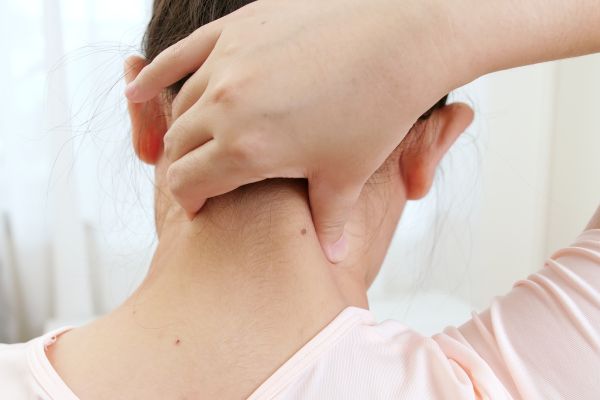
ΧΕΙΡΟΘΕΡΑΠΕΙΑ vs ΗΛΕΚΤΡΟΘΕΡΑΠΕΙΑ ΣΤΟΝ ΑΥΧΕΝΙΚΟ ΠΟΝΟ
Ποια θεραπευτική προσέγγιση προσφέρει την πιο αποτελεσματική και τεκμηριωμένη παρέμβαση στην αντιμετώπιση του αυχενικού πόνου;
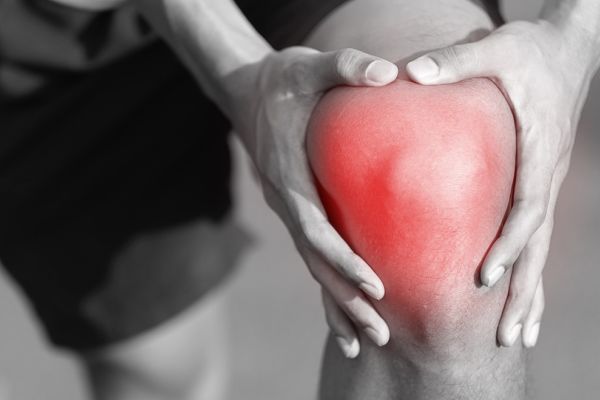
ΕΞΑΡΘΡΩΣΗ ΚΝΗΜΟΠΕΡΟΝΙΑΙΑΣ ΑΡΘΡΩΣΗΣ
Η κνημοπερονιαία εξάρθρωση απαιτεί έγκαιρη διάγνωση και πρόγραμμα εξατομικευμένης αποκατάστασης για την λειτουργική επαναφορά τής άρθρωσης.

STRESS: Η ΣΙΩΠΗΛΗ ΕΠΙΔΗΜΙΑ ΤΗΣ ΕΠΟΧΗΣ ΜΑΣ
Το στρες αναδεικνύεται σε πολύπλευρη απειλή που διαβρώνει υγεία, ισορροπία και ποιότητα ζωής του σύγχρονου ανθρώπου.
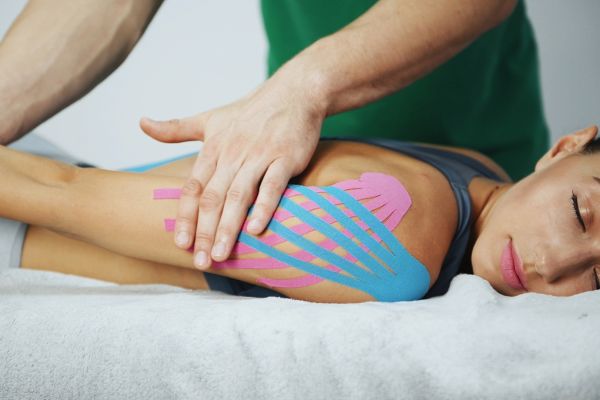
ΑΜΜΕΣΗ ΠΡΟΣΒΑΣΗ ΣΤΗ ΦΥΣΙΚΟΘΕΡΑΠΕΙΑ – ΑΣΦΑΛΕΙΑ, ΑΠΟΤΕΛΕΣΜΑΤΙΚΟΤΗΤΑ ΚΑΙ ΘΕΣΜΙΚΕΣ ΠΡΟΫΠΟΘΕΣΕΙΣ
Η άμεση πρόσβαση στη φυσικοθεραπεία μπορεί να προσφέρει ασφαλή και ιδιαίτερα αποτελεσματική φροντίδα, ενισχύοντας την ποιότητα και την αποδοτικότητα των συστημάτων υγείας, ή εμπεριέχει κινδύνους για τους ασθενείς;

Η ΠΑΓΙΔΑ ΤΗΣ ΑΝΑΚΡΙΒΟΥΣ ΑΝΤΙΛΗΨΗΣ ΤΟΥ ΧΡΟΝΙΟΥ ΠΟΝΟΥ
Ο χρόνιος πόνος δεν αντικατοπτρίζει πάντα βλάβη ιστού, αλλά αφορά μια δυναμική κατάσταση με σύνθετους νευρολογικούς, ψυχολογικούς και κοινωνιολογικούς μηχανισμούς που απαιτούν κατανόηση και ολιστική προσέγγιση.
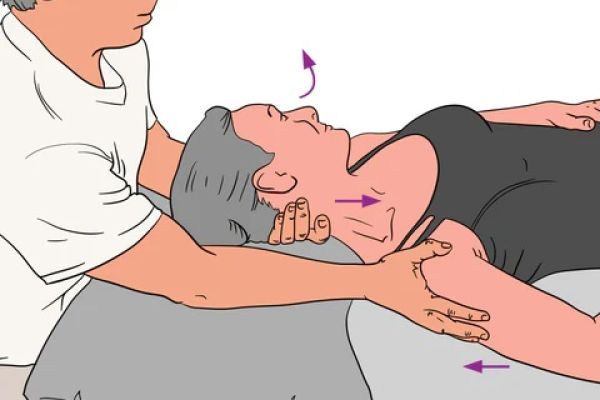
MANUAL ALIGNMENT THERAPY: ΜΙΑ ΟΛΙΣΤΙΚΗ ΘΕΡΑΠΕΥΤΙΚΗ ΠΡΟΣΕΓΓΙΣΗ
Ολιστική μέθοδος που αποκαθιστά τη σωστή ευθυγράμμιση του σώματος, μειώνοντας τον πόνο και βελτιώνοντας τη λειτουργικότητα μέσω χειροθεραπείας και εξατομικευμένων ασκήσεων.

ΙΣΧΙΑΛΓΙΑ: ΣΥΓΧΡΟΝΕΣ ΚΑΤΕΥΘΥΝΤΗΡΙΕΣ ΟΔΗΓΙΕΣ
Η σύγχρονη αντιμετώπιση για την ισχιαλγία δίνει έμφαση στη φυσικοθεραπεία, την ενεργό κινητοποίηση και την εκπαίδευση του ασθενούς για αποτελεσματική αποκατάσταση.

ΑΚΡΑΤΕΙΑ ΜΕΤΑ ΤΟΝ ΤΟΚΕΤΟ
Η ακράτεια μετά τον τοκετό επηρεάζει έως και μία στις τρεις γυναίκες, και συχνά παραμένει αδιάγνωστη λόγω ντροπής ή ελλιπούς ενημέρωσης.
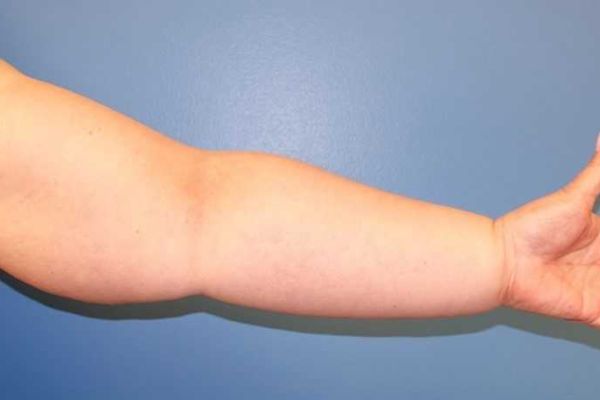
ΘΕΡΑΠΕΙΑ ΤΟΥ ΔΕΥΤΕΡΟΠΑΘΟΥΣ ΛΕΜΦΟΙΔΗΜΑΤΟΣ ΜΕΤΑ ΑΠΟ ΚΑΡΚΙΝΟ ΤΟΥ ΜΑΣΤΟΥ
Το δευτεροπαθές λεμφοίδημα του άνω άκρου αποτελεί μία από τις σημαντικότερες επιπλοκές της θεραπείας του καρκίνου του μαστού, επηρεάζοντας σημαντικά την ποιότητα ζωής των γυναικών.

ΑΥΧΕΝΙΚΟΣ ΠΟΝΟΣ
Ο αυχενικός πόνος και το αίσθημα δυσκαμψίας, ή "πιασίματος" στον αυχένα είναι από τις συχνότερες αιτίες αναζήτησης ιατρικής βοήθειας στον σύγχρονο κόσμο.
